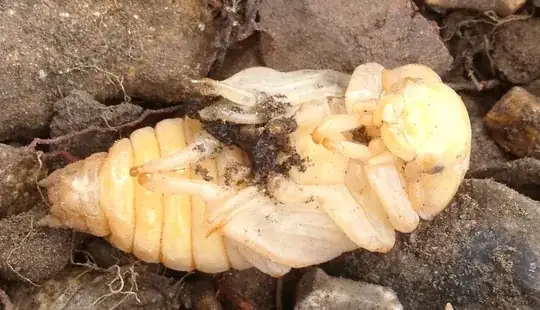It's a chafer grub, specifically a cockchafer. These can cause significant problems in lawns, and more occasionally, flower beds. Once they're adult like this, insecticides are relatively ineffectual, so when you find any whilst rootling around, kill them yourself. If it becomes a major problem (plants suddenly wilting or dying in numbers) then it might be worth looking for a nematode solution. These can be found online by googling Nemesys - there are products for all kinds of pests, so make sure you select the right one. The solution is usually watered into the ground and in the case of chafer grubs, September is the optimum time. Certain insecticides applied to the soil much earlier in the year may kill off any juvenile chafers, but one or two of the most effective are no longer available for non professional use in the UK.
UPDATED ANSWER Feb 2017
The ID in my answer given above is incorrect - the information given which relates to chafer grubs is accurate, including description of their habits and treatments available for them, but now rendered irrelevant to the question. Having seen Jackbug's answer below and done some research, his ID is correct - this is a third stage larvae of the Stag Beetle, which is, indeed, protected under the Wildlife and Countryside Act 1981, UK. Link with photos of larval stages and all information here http://www.arkive.org/stag-beetle/lucanus-cervus/image-A19506.html
